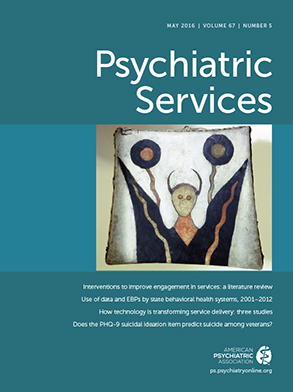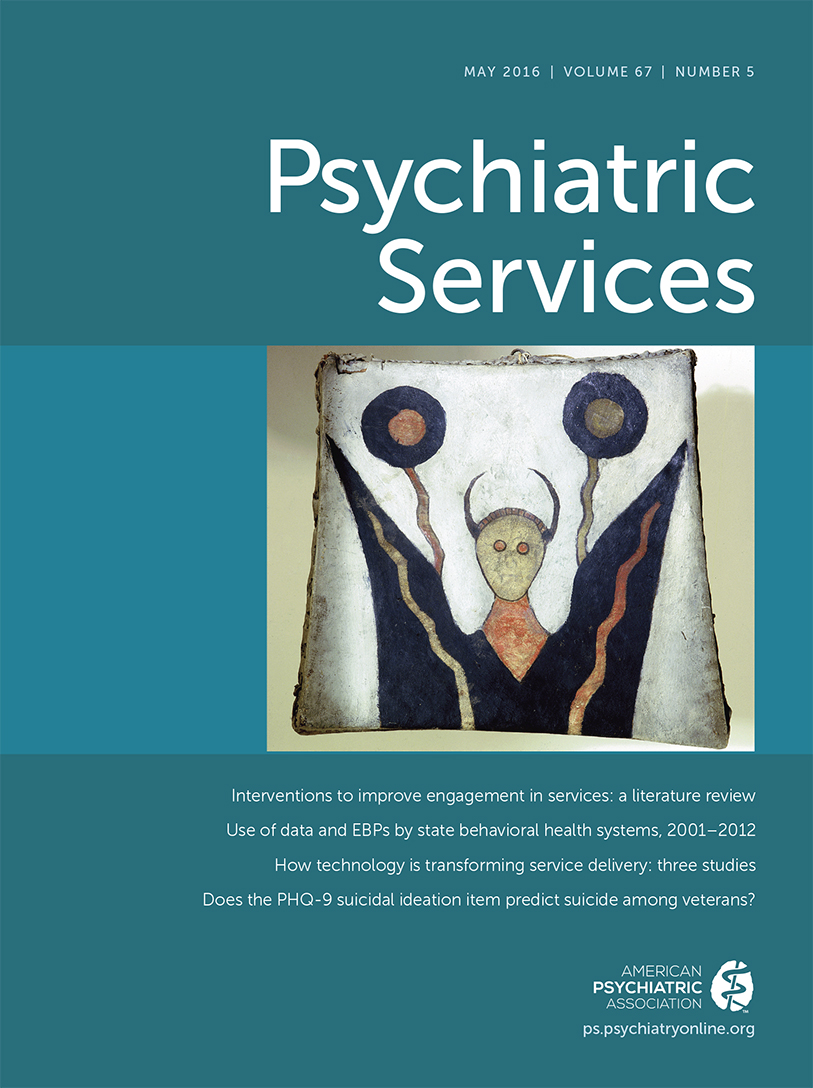White House launches task force on parity: The Obama administration has established the Mental Health and Substance Use Disorder Parity Task Force to ensure that Americans benefit from coverage expansions and parity protections included in the Affordable Care Act and the Mental Health Parity and Addiction Equity Act. Citing the importance of a heightened focus on behavioral health “in light of the prescription drug abuse and heroin epidemic as well as the suicide and substance use–related fatalities that have reversed increases in longevity in certain populations,” the Presidential Memorandum directs the task force to “identify and promote best practices for executive departments and agencies, as well as State agencies, to better ensure compliance with and implementation of requirements related to mental health and substance use disorder parity, and determine areas that would benefit from further guidance” and to present a report of its findings and recommendations by October 31, 2016. The White House Director of the Domestic Policy Council will serve as the chair, and the heads of the following agencies and offices or their designees will constitute the task force: Treasury, Defense, Justice, Labor, Health and Human Services, Veterans Affairs, Office of Personnel Management, and Office of National Drug Control Policy. According to some advocates, the government has been lax in addressing insurer noncompliance with parity regulations. At a panel discussion at the National Prescription Drug Abuse and Heroin Summit in Atlanta in March, where Obama announced the task force, he noted, “When it comes to how we oversee the parity provisions in the Affordable Care Act, we’ve got to let the insurance carriers know that we’re serious about this. . . . [P]ublic education and employer education around these issues is very important.” The Presidential Memorandum on the Mental Health and Substance Use Disorder Parity Task Force is available on the White House Web site (
www.whitehouse.gov/the-press-office/2016/03/29/presidential-memorandum-mental-health-and-substance-use-disorder-parity).
DHHS report highlights benefits of Medicaid expansion for behavioral health: States can greatly improve access to behavioral health services by expanding Medicaid under the Affordable Care Act (ACA), according to a new report from the U.S. Department of Health and Human Services (DHHS). Citing the most recent available data, the report notes that in 2014, nearly two million uninsured people with a mental or substance use disorder lived in states that had not yet expanded Medicaid and had incomes that could qualify them for coverage. To date, 30 states and the District of Columbia have expanded Medicaid under the ACA. In the other 20 states, it is estimated that more than four million people in 2016 will be denied access to coverage otherwise available under the ACA. Medicaid expansion increases access to treatment for opioid dependence, according to the report, which cites research showing that from 2013 to 2015, growth in the supply of physicians with a waiver to prescribe buprenorphine was significantly higher in expansion states, compared with nonexpansion states. The 17-page report,
Benefits of Medicaid Expansion for Behavioral Health, is available on the DHHS Web site (
aspe.hhs.gov/pdf-report/benefits-medicaid-expansion-behavioral-health).
Special issue of Harvard Review describes advances in schizophrenia treatment and prevention: An open-access issue of the
Harvard Review of Psychiatry presents a series of eight articles on “The New Natural History of Schizophrenia.” The eight articles highlight key areas of progress in understanding the development and course of schizophrenia. Specific advances described include the contributions of altered genetics and brain connectivity to the biology of schizophrenia; a renewed focus on the schizophrenia “prodrome”; and the identification of risks faced by offspring of parents with schizophrenia, including increased rates of psychotic disorders, depression, and anxiety. Other articles discuss new approaches to understanding how the illness unfolds over time, including recommended approaches to studying the long-term course of schizophrenia; the potential for electroencephalography to show genetically mediated patterns of brain electrical activity, or “electrophysiological endophenotypes,” among patients with schizophrenia; and updated evidence suggesting that dysfunctional voice processing may explain auditory and verbal hallucinations that occur in schizophrenia. The special issue was guest edited by Joshua Roffman, M.D., of Massachusetts General Hospital, who states in a video introduction, “I hope it will be a useful resource, both for those of us in the field, who may one day see this time as a turning point in our long-standing efforts to improve outcomes in schizophrenia, as well as for trainees and practitioners who are looking for some renewed optimism to share with patients and family members.” The special issue is available at
journals.lww.com/hrpjournal/pages/currenttoc.aspx.
Kaiser Foundation brief examines effects of Medicaid expansion on providers serving the homeless population: Since implementation of the ACA in 2014, Health Care for the Homeless (HCH) projects in Medicaid expansion states have seen the rate of insurance coverage for project participants grow by 22 percentage points, from 45% in 2012 to 67% in 2014, compared with an increase of only 4 percentage points, from 26% to 30%, in nonexpansion states, according to new data analyses by the Kaiser Family Foundation. The ACA’s Medicaid expansion addresses a long-standing gap in Medicaid eligibility by extending coverage to low-income single adults with no children—a group formerly excluded from the program and a group that accounts for a large proportion of the homeless population. To understand how the first full year of the expansion affected patients who are homeless and the providers who care for them, the Kaiser Foundation used data from the Uniform Data System for health centers to examine changes in insurance coverage, revenues, and costs for HCH projects. Because of the increases in insurance coverage for project patients in expansion states, third-party payments increased as a share of total project revenue in these states. In expansion states, about half (49%) of total revenue for HCH projects came from grants in 2014, whereas projects in nonexpansion states experienced little change in third-party payments and remained heavily reliant on grants. The analysis also found smaller cost increases for HCH projects in expansion states. Total costs for HCH projects in nonexpansion states were 9% higher in 2014 than 2013, compared with a 3% increase in expansion states. The 14-page brief,
How Has the ACA Medicaid Expansion Affected Providers Serving the Homeless Population: Analysis of Coverage, Revenues, and Costs, is available on the Kaiser Foundation Web site (
kff.org/Medicaid).
National Council offers guidance on leveraging Medicaid funds for housing programs: Permanent supportive housing (PSH) is an evidence-based intervention that provides permanent affordable housing and community-based, person-centered services to promote recovery among persons with mental and substance use disorders. A new report from the National Council for Behavioral Health describes strategies that state and local organizations can pursue to leverage Medicaid as a source to finance and deliver services in integrated PSH settings. The report also highlights opportunities for policymakers to align and achieve the goals of various federal housing policy initiatives. To lay the groundwork, state behavioral health authorities, Medicaid agencies, and provider organizations must form partnerships with state and local housing agencies and work together to identify, pay for, and implement the array of services needed in effective PSH programs. The report details the policy context and federal initiatives driving expansion of integrated PSH programs in recent years. It includes a planning tool that identifies best-practice housing-related services and interventions keyed to three phases—preparation, move-in, and maintenance of housing—and describes specific Medicaid authorities and demonstrations that can be used to finance these services and interventions. State implementation case studies from New Jersey and Pennsylvania are also provided. The 24-page issue brief,
Using Medicaid to Finance and Deliver Services in Supportive Housing: Challenges and Opportunities for Community Behavioral Health Organizations and Behavioral Health Authorities, is available on the National Council’s Web site (
www.thenationalcouncil.org/wp-content/uploads/2016/03/Using-Medicaid-to-Finance-and-Deliver-Services-in-Supportive-Housing.pdf).
CDC report details role of social determinants in early childhood disorders: Sociodemographic factors and environmental influences in early childhood, such as poverty and unsafe neighborhoods, have been shown to have a significant impact on childhood development and mental health. A study by researchers at the Centers for Disease Control and Prevention (CDC) has identified specific factors associated with mental, behavioral, and developmental disorders among U.S. children ages two to eight, including inadequate insurance, lack of a medical home, fair or poor parental mental health, difficulties getting by on the family’s income, employment difficulties because of child care issues, and living in a neighborhood lacking support and lacking amenities (for example, sidewalks, parks, recreation centers, and libraries). In a multivariate analysis, fair or poor parental mental health and lack of a medical home were significant predictors of having a mental, behavioral, or developmental disorder. The researchers used parent-reported information from the 2011–2012 National Survey of Children’s Health. Survey data indicated that one out of seven U.S. children ages two to eight years had a diagnosed mental, behavioral, or developmental disorder. The report was published in the March 11 issue of
Morbidity and Mortality Weekly Report (
www.cdc.gov/mmwr/volumes/65/wr/mm6509a1.htm?s_cid=mm6509a1_w).
SAMHSA-HRSA Center compiles resources on chronic pain management for clinicians: In March, the CDC released new guidelines for physicians who prescribe opioids outside of active cancer treatment and palliative and end-of-life care. The guidelines are intended to reduce the risks associated with long-term opioid therapy and to combat the growing U.S. epidemic of prescription painkiller abuse. In tandem with the CDC’s guideline publication, DHHS released its National Pain Strategy, which details steps the federal government is taking to reduce the prevalence of pain, improve its treatment, and educate health care providers about better pain management practices. These and other resources for clinicians are available on the Pain Management resource page of the Center for Integrated Health Solutions Web site (
www.integration.samhsa.gov/clinical-practice/pain-management). Clinicians can download a checklist for prescribing opioids and other clinical tools to help implement the CDC recommendations. Numerous other resources are listed, including links to the PainEDU Web site, the Mayo Comprehensive Pain Rehabilitation Center Program, the ECHO project, the Pain Action Initiative of the Center for Practical Bioethics, and SAMHSA’s Treatment Improvement Protocol,
Managing Chronic Pain in Adults With or in Recovery From Substance Use Disorders. About 40 Americans die each day from prescription painkiller overdoses, according to the CDC. For U.S. women, overdose deaths from prescription opioids increased more than 400% from 1999 to 2010, compared with 237% among men. In 2014, an estimated 1.9 million people abused or were dependent on prescription opioids.
Free online training modules for providers of services to transition-age youths: The Research and Training Center for Pathways to Positive Futures (RTC) has developed a series of ten hour-long skill-building modules that integrate the best available practice and research on increasing service engagement among transition-age youths with mental health conditions. The modules are available on the RTC Web site (
www.pathwaysrtc.pdx.edu/proj-trainingcollaborative).

